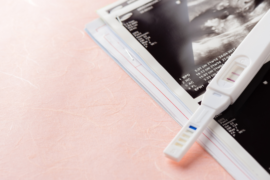When it comes to the joys of breastfeeding your infant, you probably thought you had heard it all. And then you feel a painful, hard lump. What’s it? But don’t freak out just yet. It could be a milk duct that is clogged. You should usually clear the clog at home and get back to your daily routine easily.
It’s always conceivable, of course, that the lump might progress into something more serious, like mastitis. When it comes to a clogged milk duct, let’s look at what you need to keep an eye out for and when you should see your doctor.
Symptoms of a clogged milk duct
When a milk duct in your breast gets blocked or has poor drainage, clogged or plugged milk ducts happen. If your breast is not completely drained after a feed, if your baby skips a meal, or if you’re under stress, which a lot of new moms are if we’re honest, you might experience one.
Symptoms can develop slowly and involve only one breast in general. Maybe you’ll experience:
– a lump in your breast area
– engorgement around the lump
– Swelling or discomfort near the lump
– discomfort which subsides after feeding or pumping
– pain during letdown
– Milk plug or blister (bleb) at your nipple’s opening
– movement of the lump over time
When you have a clog, it’s often normal to see a temporary reduction in your supply. When you express, you can also see thickened or fatty milk, which can look like strings or grains.

How it may become more serious
Here’s the real bummer: If you’re not doing something, it’s not possible that the clog will repair itself. Instead, an infection called mastitis can progress into it. Notice that fever is not a symptom of a clogged milk duct that you can encounter. If you have discomfort and other fever-related symptoms, you may have an infection.
Symptoms of mastitis may occur unexpectedly, including:
– 101°F (38.3°C) fever or higher
– Symptoms similar to the flu (chills and body aches)
– Warmth, swelling, and tenderness of the breast as a whole
– Breast lump or breast tissue that has thickened
– During nursing/pumping, burning feeling or pain
– Redness of the skin that has been infected
Up to 1 out of 10 breastfeeding women are affected by mastitis, so you are far from alone. You’re more likely to have it again if you’ve had it before. Untreated mastitis may lead to an accumulation of pus that needs surgical drainage, an abscess.
Causes of a clogged milk duct
The root cause of blocked milk ducts is typically something that prevents the breast from draining fully. This may be anything from pressure on your breast from a too-tight sports bra or feedings that are too infrequent to strain your breast.
The way you feed your baby can also be affected by clogged ducts and mastitis. If your baby prefers one breast over another, it may lead to clogs in the less frequently used breast. Other conditions that can encourage a backup of milk are latching problems and sucking issues.
There are also several risk factors that could make you more likely to develop mastitis and blocked ducts:
– Mastitis history while breastfeeding
– cracked skin on the nipples
– Insufficient diet
– Smoking
– Fatigue and stress
And what if you don’t breastfeed?
Many of the evidence you’ll find about clogged ducts and mastitis revolves about women who are breastfeeding. But even if you are not breastfeeding a baby, you may occasionally get these conditions or similar ones.
- Mastitis that occurs without lactation is called periductal mastitis. This disorder is an unusual source of confidence and affects women during their reproductive years in general. Symptoms may be caused by smoking, bacterial infection, broken skin on the breast, which mammary fistulas and are similar to lactation mastitis.
- Mammary duct ectasia is a disease that mostly affects people between the ages of 45 and 55. A milk duct widens, thickening and filling the duct walls with liquid that can become dense and sticky. This can ultimately lead to discharge, discomfort and tenderness, and periductal mastitis.
- In very rare cases, mastitis can also affect males. Granulomatous mastitis is an example of a chronic type of mastitis that affects both males and females. Similar to breast cancer, the signs include a hard mass (abscess) in the breast and swelling.

Treating a clogged duct of milk
You should start working on the problem at the very first sign of a clogged duct. One of the most effective treatments is massage, particularly while you’re feeding or pumping. To massage start from the outside of the breast and apply pressure as you work into the plug with your fingers. It may also help to massage while you’re in the shower or bath.
Further tips for removing a clog:
– Continue breastfeeding. The idea is to frequently continue draining the breast.
– Start feeds with the affected breast to ensure that it gets the most attention. Babies tend to suck the hardest (because they are hungrier) on the first breast they’re given.
– Try soaking your breast in a warm water tub and massaging the clog afterwards.
– Try to change the positions that you use for breastfeeding. Moving around often allows your baby’s suction to help access the clog during feeding.

When to see a doctor
Redness or the feeling of bruising on the breast may last a week or slightly longer after you’ve cleared the clog or treated mastitis. Even, make an appointment to see your doctor if you have doubts or feel like your clog or infection is just not healing. You will need another course of antibiotics or extra aid in some situations, such as drainage of an abscess.
Your doctor can recommend a mammogram, ultrasound, or biopsy to rule out inflammatory breast cancer if symptoms are ongoing. This rare form of cancer can sometimes cause similar symptoms to mastitis, like swelling and redness.

Preventing clogged milk ducts
Since a backup of milk normally triggers clogged ducts, you’ll want to make sure you feed or pump your baby regularly. In particular, in the early days of breastfeeding, experts suggest 8 to 12 hours a day.
Even, you can try:
– Massaging your breast to facilitate drainage during feeding/pumping sessions
– Skipping tight clothing or bras to make some breathing space for your breasts
– loosening tight baby carrier straps (but make sure the baby is safe)
– From time to time, varying breastfeeding positions to ensure suction reaches all ducts
– Apply a warm/humid compress to areas of the breast that tend to clog before feeding.
– Applying a cool compress after feeding sessions to the breasts
Cracked nipples and openings of the milk duct may provide an easy entry for bacteria into your breast from your skin or baby’s mouth, leading to mastitis. So, make sure to keep your breasts dry and clean, and try to cover broken nipples by using something like lanolin cream.
And although it can seem difficult, particularly if you have a newborn, please take care of yourself as much as possible.
Ask for help, get in some naps, or go to bed early, even though you know, a couple of hours later, you’re going to be fed up. Do all the self-care stuff in general, which helps you stop feeling run-down.

Conclusion
It can be painful and annoying to deal with clogged milk ducts but keep at it. Usually, without contracting an infection or requiring any intervention, you should be able to clear the plug at home.
If the clog lasts for more than two days despite your efforts or you notice that you have recurrent problems, consider having an appointment with your doctor. In your feeding routine, you might be able to alter certain items to help drain your breasts.
Your doctor will help if you develop mastitis by prescribing antibiotics and giving you other advice to prevent potential infections. And because mastitis can recur, as soon as you think you may have an infection, be sure to go to see the doctor so that you can treat it promptly.







